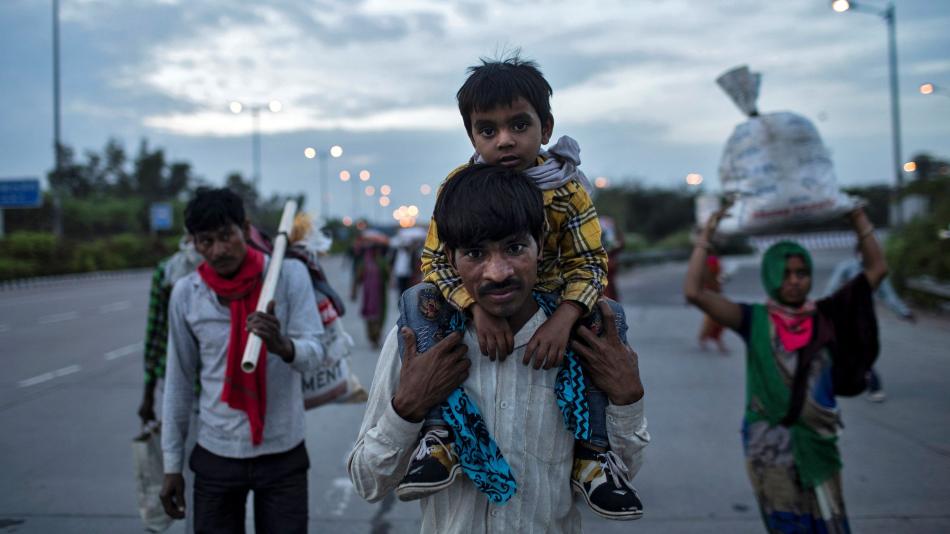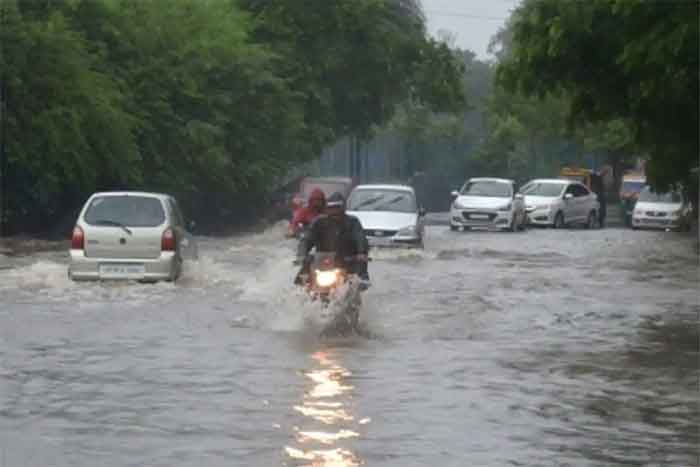
The entire world witnessed how lakhs of migrant workers from around India had returned to their home-state Bihar during the Covid lockdown in early 2020.
Where are they after a long gap of almost two years? What are they doing now? Has a large population been forced to migrate again? Or are there some people who have stayed in the village since then? Are such people looking for new employment options, or are they passing time by living out of unemployment in some way?
Pankaj Ram is a local folk artist from ‘Babu Ke Bhatkan’ a small village in Siwan district of Bihar with a population of about two and a half thousand. Half the houses here belong to the Yadav community, about 30 percent families are Muslim, while the rest are houses belong to other communities, including Dalits.
At a glance, if we look at the socio-economic fabric of the village, most of the families are small-holding farmers and agricultural labourers, for whom farming is not the main means of livelihood, but only a source of supplementary income.
 Pankaj is familiar with the stories of migrant laborers who returned from Saudi Arabia to the national capital Delhi during the lockdown. He takes us to meet Afzal Ali, 24, who, along with other friends, was sitting in an open small gallery outside his house.
Pankaj is familiar with the stories of migrant laborers who returned from Saudi Arabia to the national capital Delhi during the lockdown. He takes us to meet Afzal Ali, 24, who, along with other friends, was sitting in an open small gallery outside his house.
Afzal tells us half the men in his village who went abroad for work to countries like Saudi Arabia, Dubai and Qatar had returned and now work in Delhi, Mumbai, Surat, Ahmedabad, Kolkata in the country. Afzal Ali’s father drives an auto on the streets of Kolkata. Many of the village men work in metros as drivers, masons, carpenters and mechanics etc.
So after the Covid lockdown, have most of the migrant laborers returned to work outside Bihar?
“Oh no, no! For the first time in my life it seems that the village has been populated. Over the years the boys and men of the village have returned to the village and are mingling with each other here. Now you will say that it is a matter of great happiness, but our village, which looks populated from outside, is miserable from inside. The reason for this misery is unemployment. For how many days can one feel good in the village with unemployment? Tell me?” asked Afzal Ali.
It was a question posed to us as reply to our question. Pankaj and I stared at each other. The village is full of people and there is much joy visible but the families are helpless, what kind of contradiction is this?
It turns out that most of the people of the village have been here for two years, because most of them have not been called to work in the big cities as yet. Many are still scared that their condition may become similar to that during the Covid lockdown – they may be trapped in the city without any support system to take care of them!
Yes, some who have a little land, have returned to agriculture, but their number in the village can be counted only on the fingers. A few, who had contacts with contractors providing work in metros, have managed to get work outside the state.
“If 40 people returned to the village, there were only ten among them who had managed to return to the city for work. The rest are sitting around in village jobless” says Afzal.
So are any of the migrants who have returned earning anything at all in the village through some work here?
The cruelty of the question becomes apparent by the way Afzal laughs by way of an answer. Laughter that also reveals the pain behind it. After all, if there had been any decent income earning opportunities in the village why would there be anyone leaving home and families for work in the cities at all?
Pankaj told us that Afzal is an electrical engineer who completed his B.Tech from a private institute in Chapra. He could not pursue higher studies as his family needed him to contribute to the household income, with his father being the only earning member. As a result after graduation Afzal started looking for work and through a contractor in Gurgaon got an offer to work for a company there. He must have worked there only for four-five months when the Covid pandemic struck and the nationwide lockdown was suddenly announced.
Afzal was one of the thousands of migrant employees and workers who got thrown out of their rented dwellings by landlords after the lockdown began. With little savings in hand he left Delhi, changing three or four buses and somehow reached his home-district Siwan via Kanpur-Lucknow-Gorakhpur after a 900 km long journey.
Since then he and many like him have been sitting idle in the village as according to the job-contractors, most of the companies they used to work for in the cities are said to be closed.
The MGNREGA scheme, also known as the ‘100 days guaranteed employment’ scheme was meant to ensure that ‘every hand gets work with full wages’. So, what is the status of MGNREGA in this village?
Pankaj Ram provided the answer. He said, “How can people live on the basis of MGNREGA, sir? Low wages are also one of the reasons why MGNREGA does not attract people anymore. On top of this the local panchayat can’t even generate 100 days of employment for the laborers in a year, that’s why people have also stopped asking about it. People would prefer to work instead of sitting empty handed but MNREGA work is simply not available”.
Here, if we look at the record, under MGNREGA in Bihar, the wages are fixed at Rs 198 per day, whereas in states like Haryana, the wages under MGNREGA are more than one and a half times over that. People get more money than this by working in big cities like Patna or Kolkata etc. For example, Afzal started earning 15 thousand rupees a month as soon as he went to Gurgaon, out of which he used to save about eight thousand rupees and send it home. If his father had not been driving an auto in Kolkata, it would have been difficult for him to look after his family in the village.
Before leaving the village, we asked Afzal one last question. The question was that at the time of Covid lockdown, all the big officials of the state administration were saying that now no Bihari laborer will migrate outside the state due to economic compulsion, so what happened?
Afzal said, “Yes, I had heard that the government is going to restore jobs in police, railways, banks, but we have not seen anyone from nearby villages getting jobs, sir! They have disappointed us after raising our hopes.
Shirish Khare has been associated with rural journalism for a long time and has been continuously reporting on the economic, social and health impacts of rural life during the Corona pandemic.












































